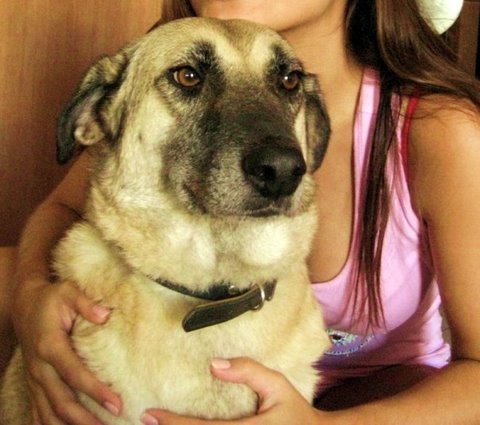
Merhaba,
Dün, Türkiye’deki hayvan hakları hareketini ve en önemlisi, barınakların işletilmesini tamamen değiştirmek üzere 10 gerekli maddeyi kapsayan bir giriş yapmıştık.
Durumu, düzgün bir şekilde ele alırken, hayati önem taşıyan iki konu var: Bunlar Kısırlaştırma ve Yerine Bırakma’nın doğru uygulanımı ve düşük maliyetli kısırlaştırmanın erişilebilirliği. Bu iki nokta, inanılmaz derecede önemli. Bu sebeple, serinin sonunda bu iki konunun her biri için ayrı bir yazı yayınlayacağız.
Fakat şimdilik, Devlet’in barınak yöneticileri ve gönüllülerine (eğer varlarsa) bir kaç sağlam öğüt vermeye odaklanacağız.

1. Kurtarma Grupları Sizin Arkadaşlarınız:
“İdeal” bir dünyada, Türkiye, sahip olduğu genç nüfus nüfusun büyüklüğü (nüfusumuzun %60’ı 30 yaşın altında) sayesinde hayvan kurtarma gruplarından oluşan geniş bir ağ kurabilir. “Kurtarma grubu” denildiğinde, tek bir amaç için toplanarak bir ağ oluşturmuş insanlar aklımıza geliyor, amaçları: Zor durumdaki hayvanları kurtarma ve onları yeniden yuvalandırma.
Türkiye’de belirttiğimiz gruplardan sadece bir kaç tane var. Sahip Çıkalım! bunlardan sadece biri. Bununla beraber, daha küçük gruplar halinde bir araya gelmiş harika insanlar da var, zor durumdaki bir hayvanı kurtarmak için ne pahasına olursa olsun gönüllü olan insanlar… Bu gruplar, rutin bir şekilde, barınaklara giderek, hayvanları kurtarmaya, tıbbi yardıma ihtiyacı olan, özürlü ve özel bakım isteyen hayvanlara yardım etmeye çalışıyorlar. Sürekli olarak, bu gruplar, tıklım tebeş dolu olan barınaklara yardım etme isteklerinden vazgeçiriliyorlar, cesaretleri kırılıyor. Durum neden böyle? Bir hayvanın kurtarma grubuna aktarılması, az da olsa barınakta bir yerin açılmasını, yiyecek ve temizlik gibi masrafların azalmasını sağlar. Hatta, zaten az olan ve Türkiye’deki barınaklarda bir gelenek haline gelmiş olan tıbbi bakım eksikliğinin daha da aza indirgenmesine yardımcı olur. Kurtarma ve yeniden yuvalandırma gruplarının oluşturulması ve hayvanların barınaklardan kurtarılmalarını desteklemek çok ama çok önemli, gelin bununla yüzleşelim. Kural olarak, kurtarma grupları, hayvanlara uygun yuvalar bulmada, aynı anda yüzlerce köpekle ilgilenmek zorunda olan barınak yöneticilerinden çok daha başarılılar. Koruma ve sahiplendirme kuralları her zaman çok daha iyi. Barınaklarının binlerce hayvanla ağzına kadar dolu oldugu bir ülkede, bir kurtarma grubu sorumluluk almaya ve hayvanları koruyup kollamaya gönüllü ise, buna karşı çıkılmasını anlamam mümkün değil…

2.Geçici Evler:
Geçici aileler arasındaki iyi iletişimin korunarak geliştirilmesi, bir barınağın ağının sağlıklı bir şekilde işlemesinde ciddi önem teşkil eder. Bu olmadan, kurtarılabilecek canlar, ne yazık ki sınırlı kalacaktır. Let’s Adopt! “Geçici Evler” kavramını ortaya koyana ve bununla ilgili kendi ağını kurana dek, Türk toplumunun, bu işlevin öneminin farkında olmaması benim için büyük bir sürprizdi. Biz, geçici evleri, hayat kurtarmak, sosyal ilişkileri geliştirmek, bir örgütün menzilini genişletmek, yaralı ve hasta ya da davranışsal bozuklukları olan hayvanları tedavi etmede, kısacası can kurtarmada düük maliyetli bir yol olarak görüyoruz.
Her barınak örgütü, kendi geçici ev ağlarını geliştirmede büyük çaba sarfetmeli. Çünkü; bu durum, söz konusu örgütün barınak ortamında ayakta kalmayı başaramayan hayvanlara, hasta ya da yaralı olan veya insanlarla iletişime geçmeye, sosyalleşmeye ihtiyacı olan hayvanlara bakabilmesini sağlar.
Geçici evler, sürekli yuvalar bulunana kadar, hayvanları sağlıklı ve mutlu kılacak ortamları sağlarlar.
Tüm “hayvanseverler” ve barınak gönüllülerinin bunu anladığına eminim.
Öyleyse, size bir kaç soru sormama izin verin :
Barınağınız, destekçi ağlarını güçlendirmek için ne kadar çaba sarfediyor?
Barınaklarınızın kurtarma grupları ile ilişkileri nasıl?
Barınak yöneticilerinizin geçici evler kavramına bakışı nedir; yönetici, bu kavramı ve gerekliliğini anlıyor mu?
Barınak, ziyaretçilerini geçici evler hakkında eğitmek için ne çaba gösteriyor?
Organizasyonunuz kaç tane geçici eve sahip? Kaç ev şu an müsait?
Özürlü bir hayvana bakabilecek bir eve sahip misiniz?
Barınağınız adına geçici sahiplenmelerde bulunuyor musunuz?
Etrafınızdaki insanları, hayvanları kurtarma konusunda eğitmek üzere her güne ayırdığınız belli bir süre var mı?
Arkadaşlarınızı barınaklardan hayvan sahiplenme konusunda yüreklendiriyor musunuz?
Geçici ev olan ya da örgütünüze yardımda bulunan arkadaşlarınız var mı?
Evet? Hayır? Eger cevabınız HAYIRSA… Neden?
Size düşünecek bir kaç şey…
Devam edecek…
Viktor Larkhill
v.larkhill@googlemail.com
—–

SHELTER REFORM… 2
Hi.. yesterday we provided an introduction to the 10 issues necessary to completely reform the animal welfare movement in Turkey, and most importantly, the way Turkish shelters are run.
There are two issues of extreme importance to the correct handling of the situation, that is the correct implementation of Neuter and Return and the availability of Low-Cost spay and neuter. Those two points are extremely important and we will dedicate one post for each right at the end of the series…
But for now we will continue focusing on giving some sound advice to the Nation’s shelter managers and their volunteers (if any).
1. Rescue Groups are your friends.
In an ideal world, Turkey, with its extremely young population (60% of the population below 30) would have developed a strong network of animal rescue groups. By rescue groups we would understand a group or network of people working with only a goal in mind: The rescue and re-homing of animals in need.
Turkey doesn’t have many of those groups, but there are a few. Let’s Adopt! is one of them, but there are out there smaller groups of amazing people, people willing to do whatever it takes to rescue an animal in need. Those groups routinely try to help shelters in getting animals out, animals with urgent medical needs, handicapped animals, animals in need of special medical care. Routinely those groups and turned away and discouraged from offering their help to overcrowded shelters. Why is that the case? The transfer of an animal to a rescue group would free up scarce space at the shelter, it would reduce expenses for feeding, cleaning, even reduce the need for the inadequate medical care that is the norm in most of those shelters.
Encouraging the creation of rehoming networks, of rescue groups, getting animals out of the shelters is very important and, lets face it, as a rule, Rescue Groups are far more successful at finding suitable homes for the animals than a shelter manager dealing with thousands of dogs ever would. The screening and adoption procedures will always be far better. In a country where shelters are filled to the brim with thousands of animals, if a rescue group is willing to take custody and care for an an animal I don’t see any reason why this should be denied.

2. Foster homes
The development of a good network of foster homes is crucial to the good functioning of a shelter network. Without it there is a severe limitation to how many lives can be saved. Much to my surprise, until Let’s Adopt! introduced the concept of foster homes and created its own network Turkish society was not aware of the importance of this
function. We have always seen fostering at a low cost way to save lives, improving public relations, extending the reach of an organization, rehabilitating sick and injured animals, or animals with behaviour problems, in short, saving lives.
Every shelter organization should make a BIG effort in developing its own network of foster homes as it allows the organization to take care of animals who cannot survive on a shelter environment, sick or injured animals, or dogs needed human contact and socialization.
Foster homes provide a great setting that keep animals healthy and happy whilst a final home is found.
I am sure all “animal lovers”, shelter volunteers out there understand this… so let me ask you all a few questions:
What efforts is your shelter making to increase its network of supporters?
How is the relationship of your shelters with Animal Rescue Groups?
What is the attitude of your shelter manager to the concept of foster homes?
Does she understand the concept and the need for such a network?
What efforts is the shelter making to educate visitors about the concept of foster homes?
How many foster homes does your organization has? How many of them are available right now?
Do you have a good home to take care of a handicapped animal? Do YOU foster on behalf of your shelter?
Do you dedicate an allocated time daily to educate people around you about rescuing?
Do you encourage your friends to adopt animals from the shelter?
Do any of your friends foster or help your organization?
Yes? No? If the answer is NO… Why not?
Food for thought…
To be continued…
Viktor Larkhill
v.larkhill@googlemail.com





This are very beautiful pictures and i love it, to see how good people are in this world and loves animals so much like you all ! I have a lot of animals in my home and i am so sorry that i cant adopt one of our dogs or cats , but i told all my friends to adopt one or more of your animals ! I hope, they do it .
Greetings from Austria
Iris